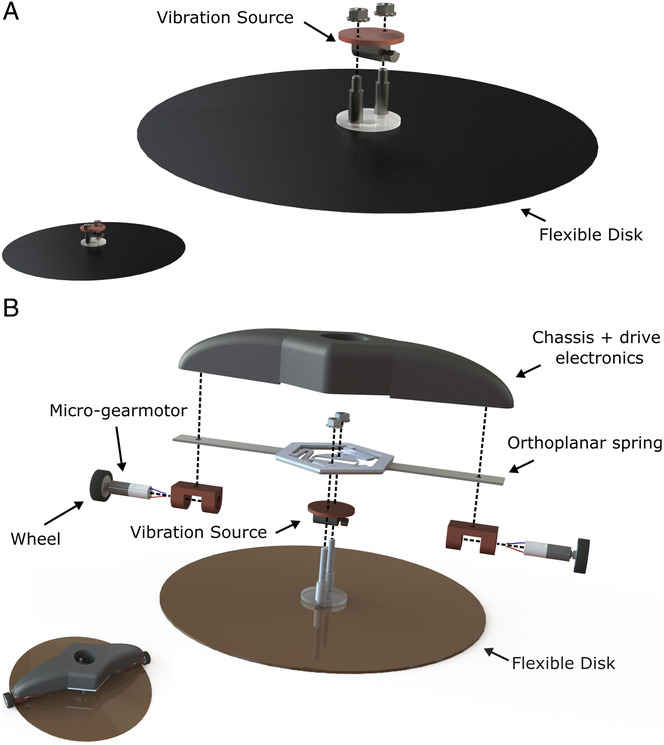| A Robot That Sticks To the Ceiling By Vibrating! |
| Written by Mike James | |||
| Sunday, 11 July 2021 | |||
|
This is a nice example of how unexpected effects can be put to good use. Well I think it's unexpected, and I also think that the mechanism behind how this works isn't very clear. When things are small the universe behaves in different ways. Surface tension is enough to hold the weight of a pond skater and Van der Waals forces can hold something in an iron-like grip. In this case the effect is vibration. Take a small vibrating plate and put it in contact with a smooth surface and it sticks - why? It isn't just a small stickiness either - it can withstand a pull of 5N. Take a look at the video first to see it in action: It's impressive, but there are some drawbacks. At the moment the plate only sticks to smooth surfaces and it vibrates at 200Hz which is quite noisy. Another interesting problem is that it isn't clear how or why it works. The researchers have investigated and find that there is an area of low pressure under the plate, but it isn't clear why. This is almost as intriguing as the fact it has a practical use. As a former physicist my money would be on the standing wave patterns on the circular disk - look up Bessel functions - creating a steady state vacuum by pushing air out of the edge. A bit like a peristaltic pump but in a circle. If this is the case we need some simulation software to work out the best shape and the best driving signal.
Even if you don't care how it works, you could well think up some uses for it and perhaps improve the design. In particular, can we get rid of the drive wheels by modulating the signal? And what about doing something about sticking to rough surfaces. Of course, the researchers have a head start - We hypothesize that the flexibility of the disk allows for the formation of these nodal patterns under a relatively small excitation force and that these nodal regions enable the generation of a small adhesive region at the center of the disk by limiting the flow of air between the inner and outer regions. Further work remains to be done to fully quantify the effects of surface roughness and curvature on adhesion. To allow for this adhesion technique to support larger loads for applications such as warehouse fulfillment or in-home automation, a better understanding of the scalability of this effect with the size and number of adhesive disks is needed. More InformationGas-Lubricated Vibration-Based Adhesion for Robotics, by William P. Weston-Dawkes, Iman Adibnazari, Yi-Wen Hu, Michael Everman, Nick Gravish, and Michael T. Tolley. Related ArticlesToo Good To Miss: Salto The Bouncing Robot Cubli - A Reaction Wheel Drive Robot ROSPHERE - A Hamster Ball Robot To be informed about new articles on I Programmer, sign up for our weekly newsletter, subscribe to the RSS feed and follow us on Twitter, Facebook or Linkedin.
Comments
or email your comment to: comments@i-programmer.info |
|||
| Last Updated ( Sunday, 11 July 2021 ) |



